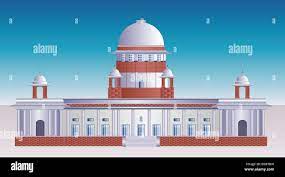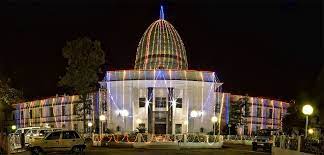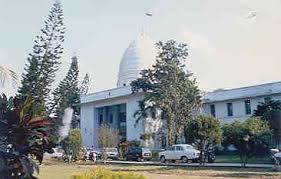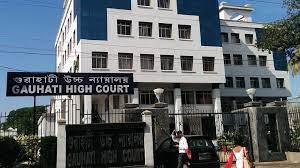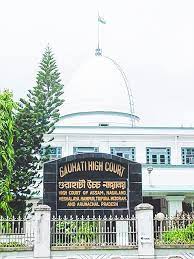Approaches this court under its Article 32 jurisdiction, seeking appropriate direction to the first respondent to prematurely release him, on the ground that he has been in custody for 24 years without grant of remission or parole. (Para 1)
Sentencing is a judicial exercise of power. The act thereafter of executing the sentence awarded, however, is a purely executive function – which includes the grant of remission, commutation, pardon, reprieves, or suspension of sentence. (Para 9)
Executive power which is inherently discretionary in nature, has to be exercised fairly, reasonably, and not arbitrarily (Para 10)
Noting that the presiding judge’s opinion did not consider the five parameters laid out in Laxman Naskar (supra), a coordinate bench of this court in Ram Chander (supra) directed the presiding officer of the concerned court, to consider the matter afresh and in light of these factors, so that the appropriate government could in turn reconsider the petitioner’s application for premature release. A similar fate awaited the writ petitioner in Jaswant Singh v. State of Chhattisgarh[Jaswant Singh v. State of Chhattisgarh, 2023 SCC OnLine SC 35] (wherein both writ petitions arose from the same facts and commission of offence). (Para 13)
The majority view in Sriharan (supra) and the minority view, had underlined the need to balance societal interests with the rights of the convict (that in a given case, the sentence should not be unduly harsh, or excessive). The court acknowledged that it lies within the executive’s domain to grant, or refuse premature release; however, such power would be guided, and the discretion informed by reason, stemming from appropriate rules. (Para 22)
Applying these principles in the case at hand, on the date of conviction (24.05.2001), it is the pre-2002 policy[No. A/P.M-03/91-550 dated 21.01.1984.] that was applicable. The relevant extract is as follows: “[…] the State Government has decided that to give remission to the accused who has been sentenced to life imprisonment and subsequently to release him from prison, life imprisonment should be considered as imprisonment for 20 years and the following procedure should be adopted in the matter of releasing the prisoners sentenced for life imprisonment – 1. Under Section 429 of the Code of Criminal Procedure, 1973 Act No. 2 of 1974, the prisoner who gets life imprisonment will not get the benefit of presumptive report (ambiguous) i.e. in the case in which he has been sentenced to life imprisonment, the period spent in jail during the period of enquiry, investigation and disposal of the case and before the date of conviction may be deducted from the imprisonment of 20 years. 2. Upon conviction, if any person has been sentenced to imprisonment for life for an offense for which one of the punishments is death or if the death sentence has been commuted to life imprisonment under Section 433 of the Code of Criminal Procedure, 1973, and where such sentence of imprisonment for life has been awarded on or after 18.12.1978, such prisoner shall be released from prison only ifa. He has spent a period of 14 years in prison from the date of conviction. b. The total of the period of remission and imprisonment is 20 years. [….]” It is pertinent to point out that in the old pre-2002 policy, there is no mention of any ineligibility criteria, much less one that is analogous to Rule 529(iv)(b) of the 2002 policy, which was cited by the Remission Board in its rejection of the petitioner’s application on 20.04.2023. (Para 24)
In light of these findings and the precedents discussed above, it would be appropriate if the Remission Board reconsidered the petitioner’s application for remission afresh, considering the reports of the police and other authorities, the post-prison record of the petitioner, the remissions earned (including that which is earned for good conduct) his age, health condition, family circumstances, and his potential for social engagement, in a positive manner. The concerned presiding judge is hereby directed to provide an opinion on the petitioner’s application for premature release, by examining the judicial record, and provide adequate reasoning, taking into account the factors laid down in Laxman Naskar (supra), within one month from the date of this judgment. With the benefit of this new report, the Remission Board may reconsider the application – without entirely or solely relying on it, but treating it as valuable (maybe weighty) advice that is based on the judicial record. Given the long period of incarceration already suffered by the writ petitioner and his age, the Remission Board should endeavour to consider the application at the earliest and render its decision, preferably within three months from the date of this judgment. (Para 25)
SUPREME COURT OF INDIA
2023 STPL(Web) 216 SC
[2023 INSC 771]
Rajo @ Rajwa @ Rajendra Mandal Vs. State Of Bihar & Ors.
Writ Petition (Criminal) No(S). 252 of 2023-Decided on 25-8-2023
https://stpllaw.in/wp-content/uploads/2023/08/2023-STPLWeb-216-SC.pdf

